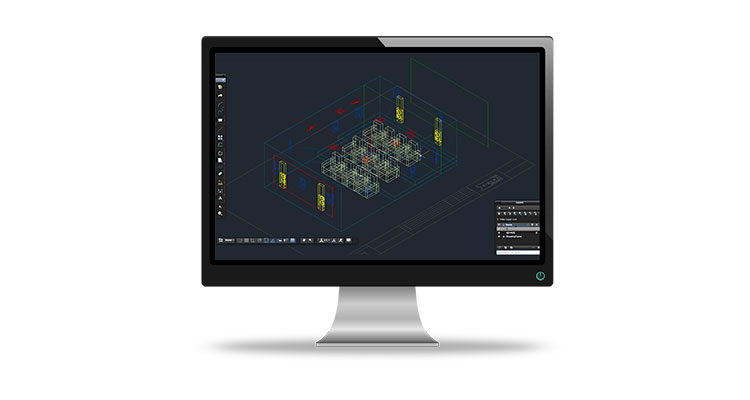The Future of Smart Homes
 By Philip Masterson
By Philip Masterson
Guest Contributor
When someone says, “The future is now,” many raise an eyebrow. After all, we’re still not living in a science-fiction like world with unimaginable technology. You may question if such technology is even possible. But, reality is in fact stranger than fiction. The technology available nowadays, although still expensive, is right out of sci-fi novels. These devices are a sneak peek of what’s coming up in the next few years.
Architecture
While you can’t expect towering skyscrapers higher than Mt. Everest in the future, designs in residential structures are certainly not your typical box-with-a-roof model. Climate change, extreme weather condition and population growth will certainly be considered for future homes. Sustainability will be a norm in any neighborhood.
“The only path forward is to harness solar, wind and water for power and to use the power of computers to design, build and maintain homes,” says Victor Vetterlein, a New York architect, in an interview with Forbes.
A trend in prefabricated homes, which takes no time and is way cheaper than a typical home construction, will address the population density in urban areas. Meridian 105 Architecture released a project called Weave Housing to address multiple issues in urban living. Inspired by a child’s weaving loom, it utilizes deep overhangs and pockets to provide ventilation and natural lighting.
Houses of the future will address harsher weather conditions and sustainability. That is, if the public decides to educate itself regarding the changing climate.
Comfort
Remember those huge “cellphones” back in the ‘90s? Or that old desktop that you couldn’t take anywhere? Apparently, pushing a button is a chore in the future. Touch screens, feather touch technology and voice-recognition have been around for years. But these technologies have been developed beyond your imagination in recent years. Apple’s Siri eliminates the need to constantly tinker with your iPhone while providing human-like responses. Microsoft’s Kinect, on the other hand, can successfully merge the virtual and the physical world. By eliminating the need for game controllers, players are engaged with the game unlike the Atari of the past few decades.
The recent release of Google Glass further underlines the hands-free technology that will prevail in the future. This wearable technology brings Star Trek technology to life. Still unconvinced? Look at how Revolv is taking advantage of Google Glass’ technology. And this is still under development.
Security
With all the gadgets and appliances for future homes coming in pieces, technology for home security is also getting complicated. Of course, you need to protect your expensive smart home and all the devices inside. All across the country, centralized security systems are a norm. These systems even run on a Wi-Fi network, which was unheard of 20 years ago.
Now comes the new generation of home security technologies. Combining portability, Internet and design, these new systems are aiming to make security a breeze for you by doing all the work by itself. July saw the release of Canary, the self-proclaimed world’s first smart home security system. It combines HD videos recordings, night vision, motion detection, a high quality microphone and even monitors the temperature, humidity and air quality—things of which James Bond would be quite proud. The unassuming cylindrical tube packs sophisticated technology inside. It can also learn and improve based on user behavior. It is also controlled from a smart phone and can alert users real-time.
However, as these devices employ sophisticated programming and high-level encryption, new breed of home invaders also emerge: the hackers. These computer whiz kids can potentially tap new security systems with ease. In an interview with GigaOm, Daniel Crowley of Trustwave SpiderLabs says certain systems, such as Mi Casa Verde’s VeraLite, are easy to hack with simple techniques.
“There’s a secondary interface to the web interface of the VeraLite called UPNP, and in its basic form it doesn’t have the ability to support authentication,” he explains. “If I have access to the Local Network, I have full control of the VeraLite from the UPNP without a username or password.”
Entertainment
The simple boob-tube of the past has now evolved into an all-in one entertainment center. With literally thousands of cable channels, you will never be off your couch for years! But, that’s old news. Large companies in the entertainment industry, namely LG, Samsung, Panasonic, Toshiba and Sony, are on a race to produce the next Smart TV. The television is no longer a watch-only device. Interacting with the elements on TV is not only the future, it is happening now. Any Smart TV can access the Internet to be able to share content. Applications can also be accessed through Smart TVs. Oh, and you don’t really need a remote control anymore.
Samsung’s Smart Hub TV series features hand gesture recognition technology and voice commands. You can play, pause and flip channels with just simple voice requests. 3D technology is also making its way onto your living room. HD becomes a thing of the past as these companies make your viewing experience as lifelike as possible. Another good news about this upgrade in TV technology is that they’re also energy efficient.
You may not have any robots at home right now, unless you count Roomba. But, smart home is not only a possibility, but a certainty. Although technologies are coming in slowly as they are being produced by independent companies, it is exciting to know how these technologies integrate and improve lives.
Image via Samsungtomorrow on Flickr




